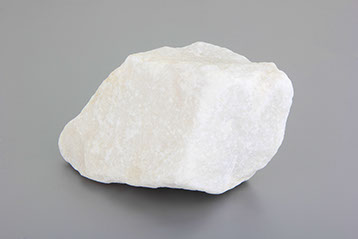Dolomite
The mineral dolomite crystallizes in the trigonal-rhombohedral system. It forms white, tan, gray, or pink crystals. Dolomite is a double carbonate, having an alternating structural arrangement of calcium and magnesium ions. It does not rapidly dissolve or effervesce (fizz) in dilute hydrochloric acid as calcite does. Crystal twinning is common.
Solid solution exists between dolomite, the iron-dominant ankerite and the manganese-dominant kutnohorite. Small amounts of iron in the structure give the crystals a yellow to brown tint. Manganese substitutes in the structure also up to about three percent MnO. A high manganese content gives the crystals a rosy pink color. Lead, zinc, and cobalt also substitute in the structure for magnesium. The mineral dolomite is closely related to huntite Mg3Ca(CO3)4.
Because dolomite can be dissolved by slightly acidic water, areas of dolomite are important as aquifers and contribute to karst terrain formation.

AVAILABLE FOR SHIPMENT
COMMODITY
Dolomite Ore - CaMg(CO3)2
QUANTITY
Please contact us for further details.
CHEMICAL COMPOSITION
N/A
PHYSICAL COMPOSITION
N/A
PACKING
In accordance to the contractual agreement.
LOADING PORT
In accordance with the contractual agreement.
PRICING
Please contact us for further details.
© Copyright 2019 Stone Hi Caliber Sale (PJS) Company - All rights reserved.
